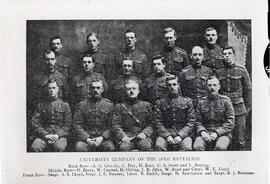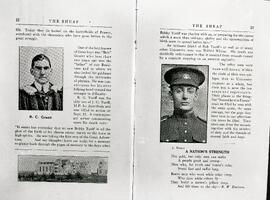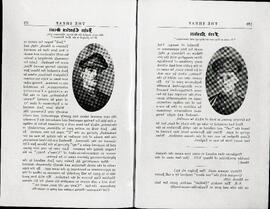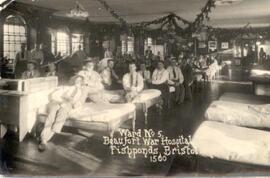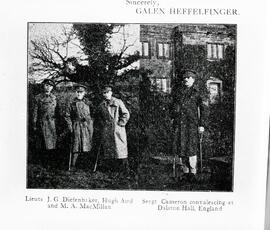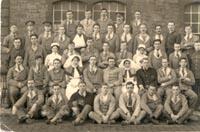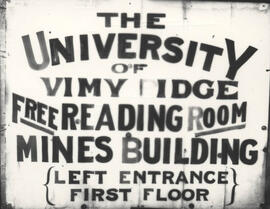University Company of the 28th Battalion - Group Photo
- A-10961
- Item
- Apr. 1915
Image of the University Company of the 28th Battalion. Members, back row (l to r): Arthur G. Gruchy, C. Day, H. Barr, C.A. Scott, Louis Brehaut. Second row: Harry Berry, W. Garrod, Herbert Olding, John Bolton Allen, William Burd and Corporal William Exton Lloyd. Front row: Sergeant Arthur Stephen Kenyon Lloyd, Sergeant J. Eadon Reaney, Lieutenant B. Smith, Sergeant H. Spackman and Sergeant Reginald J. Bateman.
Bio/Historical Note: The 28th Battalion (Northwest), CEF, was an infantry battalion of the Canadian Expeditionary Force during World War I. The 28th Battalion originally recruited in Saskatoon, Regina, Moose Jaw and Prince Albert, Saskatchewan and Fort William and Port Arthur (now Thunder Bay), Ontario and was mobilized at Winnipeg, Manitoba. The battalion was authorized on 7 November 1914 and embarked for Britain on 29 May 1915. It disembarked in France on 18 September 1915, where it fought as part of the 6th Infantry Brigade, 2nd Canadian Division, in France and Flanders until the end of the war. The battalion was disbanded on 30 August 1920. The battalion had five officers commanding: Lieutenant-Colonel J.F.L. Embury, CMG, 29 May 1915 – 17 September 1916; Lieutenant-Colonel A. Ross, DSO, 17 September 1916 – 1 October 1918; Major G.F.D. Bond, MC, 2 October 1918 – 6 November 1918; Major A.F. Simpson, DSO, 6 November 1918 – 16 December 1918; Lieutenant-Colonel D.E. MacIntyre, DSO, MC, 16 December 1918-Demobilization.The 28th Battalion was awarded the following battle honours: Mount Sorrel, Somme, 1916, 1918; Flers-Courcelette, Thiepval, Ancre Heights, Arras, 1916, 1918, Vimy, 1917, Scarpe, 1917, 1918, Hill 70; Ypres 1917; Passchendaele; Amiens; Hindenburg Line; Drocourt-Quéant; Canal du Nord; Cambrai, 1918; Pursuit to Mons, France and Flanders, 1915-1918.



